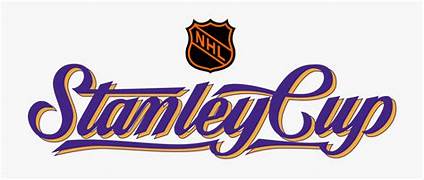
DISCLAIMER: Most, if not all, of the following information has been fact checked against fairly reliable sources. However, there is always the chance that something is inaccurate. If you notice an inaccuracy, know that you have my sincerest apologies and a fond reminder that I am, as the title suggests, just a beginner.
Every sport has its grand championship at the end of the season to declare one team the ultimate winner of the year. For (American) football, it’s the Super Bowl. For baseball, it’s the World Series. For hockey it’s the Stanley Cup. The Super Bowl has come and gone and the World Series isn’t scheduled until autumn, but the Stanley Cup playoffs have only just begun. This article, which has great relevance with the aforementioned beginning of playoffs, will be covering the basics of the National Hockey League (NHL) with the assumption that the reader has little to no starting knowledge. If you are already familiar with the NHL, this is probably not for you.
The Teams
Currently, there are 32 teams, divided into four divisions and broken into two conferences. The Eastern and Western Conferences are exactly what they sound like – the largest sections that consist of teams from the East Coast and teams from the West Coast, respectively. Within the Eastern Conference are the Atlantic Division and the Metropolitan Division and, within the Western Conference, are the Pacific Division and Central Division. To save anyone a 30-Google search, the 32 teams are as follows:
Atlantic Division: Boston Bruins, Toronto Maple Leafs, Tampa Bay Lightning, Florida Panthers, Buffalo Sabres, Ottawa Senators, Detroit Red Wings, Montreal Canadiens.
Metropolitan Division: Carolina Hurricanes, New Jersey Devils, New York Rangers, New York Islanders, Pittsburgh Penguins, Washington Capitals, Philadelphia Flyers, Columbus Blue Jackets.
Central Division: Colorado Avalanche, Dallas Stars, Minnesota Wild, Winnipeg Jets, Nashville Predators, St. Louis Blues, Arizona Coyotes, Chicago Blackhawks.
Pacific Division: Vegas Golden Knights, Edmonton Oilers, Los Angeles Kings, Seattle Kraken, Calgary Flames, Vancouver Canucks, San Jose Sharks, Anaheim Ducks.
One thing to note is that teams in the NHL come from both the United States and Canada, which really begs the question of which nation is being referred to in the “national” part of the National Hockey League, but I digress. Also, players do not need to be Americans or Canadians in order to be drafted into the NHL. As it turns out, a good portion of NHL players are from countries such as Russia or Sweden, for example, where hockey is a big deal. There are, of course, other hockey leagues around the world and in North America, but the NHL remains the one of highest standing and possesses the most grandeur.
How the Regular Season Works
The regular season starts in October and ends in April, giving the teams six months to play 82 games. These games are when teams earn points, thereby determining the standings within divisions and conferences. A game has 60 minutes of play split up into three 20-minute periods with fifteen-minute intermissions in between periods.
If, at the end of the 60 minutes, also known as regulation, the score is tied, then it will go into overtime. Overtime is a five-minute period where the first team to score wins. However, instead of the typical five-on-five (excluding goalies) setup of regulation, each team will have three players out on the ice. If at the end of overtime the score is still tied, they’ll go to a shootout. Basically, each team will have a player try to score on the goalie (one on one, no others on ice), and they’ll keep sending out players until one team scores and the other doesn’t. Obviously, the team that doesn’t score, loses.
When a team wins, it gets two points. When it falls in overtime or a shootout, it gets one point. Being defeated in regulation, zero points. To restate, all teams play 82 games over roughly six months. They play each team at least twice, but will play squads within their conference more often. Throughout these games, they accumulate the points, and their standings within their division and conferences are determined through this. Their standing at the end of the regular season are what determine if a team will go to the playoffs or not.
How the Playoffs Work
When it comes to the playoffs, the number of teams is narrowed down from 32 to 16. The top three teams points wise of each division are guaranteed to go to the playoffs, while two wild card spots from each conference are the final four spots. These wild card spots are taken by the top two finishers of each conference, behind the already guaranteed ones, of course.
There are four rounds with a best-of-seven-games format, also known as a series. These games are like regular-season games, except for OT. If it goes to overtime, there will be 20-minute periods and each team will have five players out on ice. Sudden death remains. There are no shootouts so 20-minute periods of overtime will keep getting added until a team scores and, consequently, wins.
The top team of the conference will play the last team of the conference, the second top team will play the second to last team, the third team will play the third to last, and so on and so forth. The first round will narrow teams from 16 to eight. The second round narrows it down to four. The third round, or conference finals, will narrow it down to two, and those two are the top of each conference. They will then battle it out in the Stanley Cup Finals.
If this was confusing, a visual should be provided below.
Playoffs 2023
Now that we’ve covered the general layout of playoffs, let’s get into the current playoffs, the one people may talk about, should you find yourself in a company of hockey people. At the time of this article being written, the first round has yet to be done, so there’s really not much to say. However, here’s the playoffs bracket, so you can see for yourself who’s made it:
(From top to bottom, left to right, the teams are as follows: Colorado Avalanche, Seattle Kraken, Dallas Stars, Minnesota Wild, Vegas Golden Knights, Winnipeg Jets, Edmonton Oilers, LA Kings, Boston Bruins, Florida Panthers, Toronto Maple Leafs, Tampa Bay Lightning, Carolina Hurricanes, New York Islanders, New Jersey Devils, New York Rangers)
Parting Words
More could be said about hockey (e.g. the rules, the penalties, the evolution of protective gear, the famous players, the draft, the minor leagues, the various jerseys, the experience of seeing it live). However, that feels like a little much to cover in a beginner’s guide. I recommend Google and YouTube and, oddly enough, TikTok, to grow your knowledge, should you be so convinced that it is something worth your while. If you made it this far, hopefully you got something out of this article, whether it be a better understanding of the NHL or amusement or horror.

